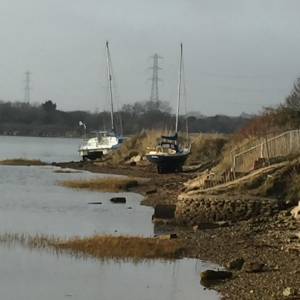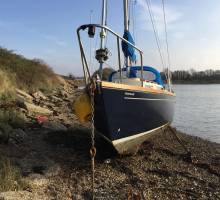
Check your Mooring!
Out on a dog walk with a friend recently, we came across this sad sight following Storm Angus. These two boats were washed up with mooring lines and buoys still attached and perilously close to rocks and concrete debris on the shore line.
This scene seems to be far too common. I have come across about 10 boats who have suffered this fate in my local area just this year! The damage that can be incurred and the effort involved in getting them back in the water and secured whilst ensuring that the vessels are still sea worthy is significant.
To avoid this happening to your pride and joy, it is essential that you check your moorings regularly. Mooring lines can be under severe pressure on a daily basis, depending on how sheltered (or not) your mooring is and so it is crucial that you spend a little time giving it the once over. Obviously it is easy to check above the water line but how often do we actually do this even? Don't forget shackles can perish, ropes can fray and become weak and chains can deteriorate, not to mention the sinker becoming dislodged. If you use cable ties in the mooring set up, these can be highly susceptible to UV damage and therefore cannot be relied upon.
If your mooring dries out, it is easier to survey all of the parts. But do be careful if you are out on the mud and always have somebody with you in case you get in to trouble.
Also worth checking is your boat insurance policy. Have you checked that your particular method of mooring is covered under your insurance policy? Some policies only cover the vessel for certain months of the year on a mooring and insist that the boats are dry stored during certain months. Your policy may also insist that the mooring is laid by a professional mooring contractor and checked after a specified length of time. Always best to check the terms and conditions of your individual policy.
Written and published by Chrissie Capel (Boatshed)



